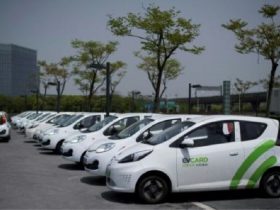By Brian Collie, Justin Rose, Rahul Choraria, and Augustin K. Wegscheider (Boston Consulting Group)
This report is part of BCG’s ongoing research on the reinvention of automotive, a series of publications focusing on new technologies that are transforming the automotive industry. Here, we examine the ways in which shared autonomous electric vehicles will change mobility in the US. Upcoming publications will focus on the evolution of powertrain technologies and the impact of technological change on the profit pools of the automotive-based mobility industry.
AT A GLANCE
By 2030, a substantial proportion of people in the largest US cities will have ex-changed their private cars for shared autonomous electric vehicles (SAEVs). This move will usher in the greatest change in mobility the US has experienced in well over a hundred years. Ultimately, we believe, it will change the world.
All Signs Point to SAEVs
A convergence of technologies—allowing for ride sharing, autonomous vehicles, and electric powertrains—enables the move to SAEVs. These technologies are progressing rapidly, and multiple pilots are underway. And consumers in cities are ready for a transportation alternative that will improve safety, access, and reliability.
Start Your Strategy Engines
Reinventing mobility will upend the status quo. Cities face challenges in urban planning and more, but those that move forward proactively stand to reap benefits. Automakers and suppliers’ long-held business models will be shaken and in some cases toppled. These companies need to take a long hard look at their position and capabilities and figure out how to succeed in a new mobility paradigm. Some companies will reinvent themselves as providers or suppliers of mobility as a service; others will become obsolete. Disruption is here, and decisive action is needed now.
(…)
We estimate that by 2030, a substantial share of the 175 million Americans who live in the nation’s largest cities will turn to SAEVs, cutting transportation costs by nearly 50%, reclaiming time instead of losing hours a day to traffic and putting up with all the expense and hassle of urban automobile ownership. SAEV fleets will account for nearly 25% of all auto passenger miles traveled in the US by 2030. Such a change will have an enormous impact on health, safety, and quality of life in cities: Traffic accidents and fatalities will be reduced by nearly two-thirds. Pollution will be drastically curtailed. Cities can repurpose millions of square feet once used for parking to new green spaces or commercial uses while securing more affordable mobility and accessibility for elderly, disabled, and low-income people.

Please, read the full report at: https://www.bcg.com/publications/2017/reimagined-car-shared-autonomous-electric.aspx















